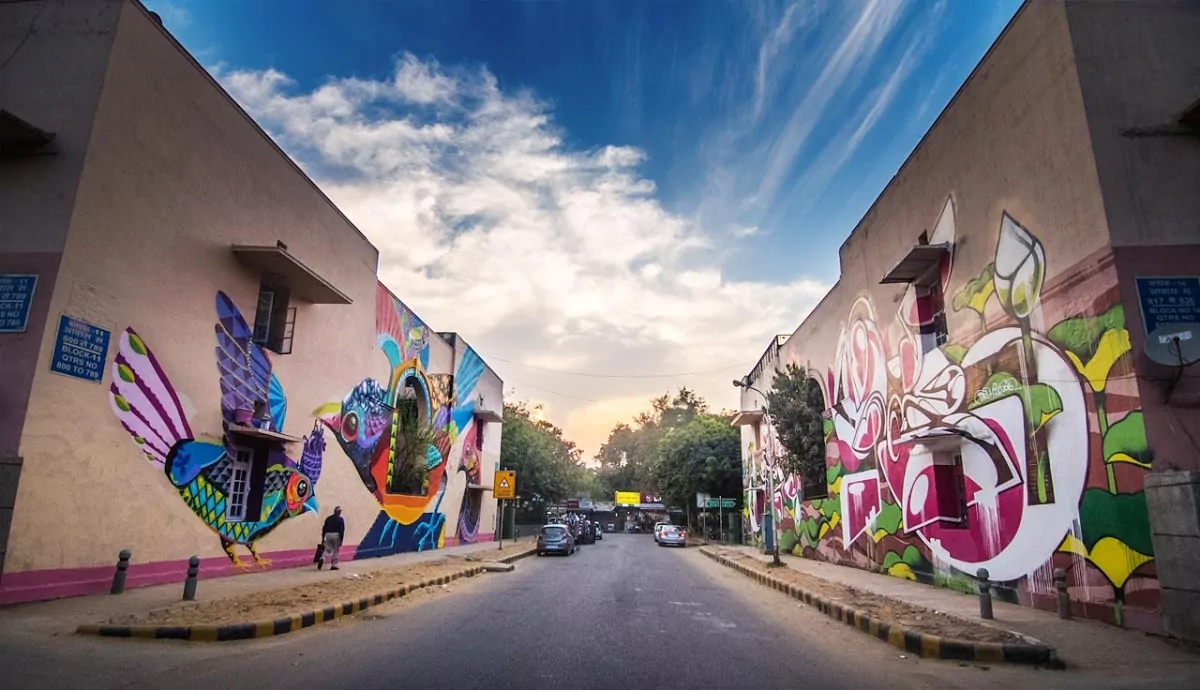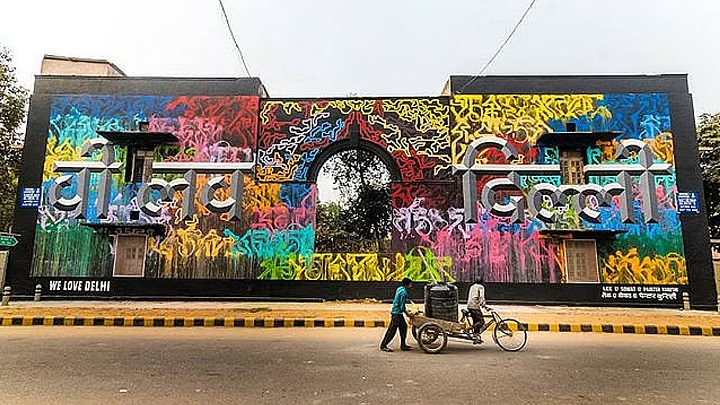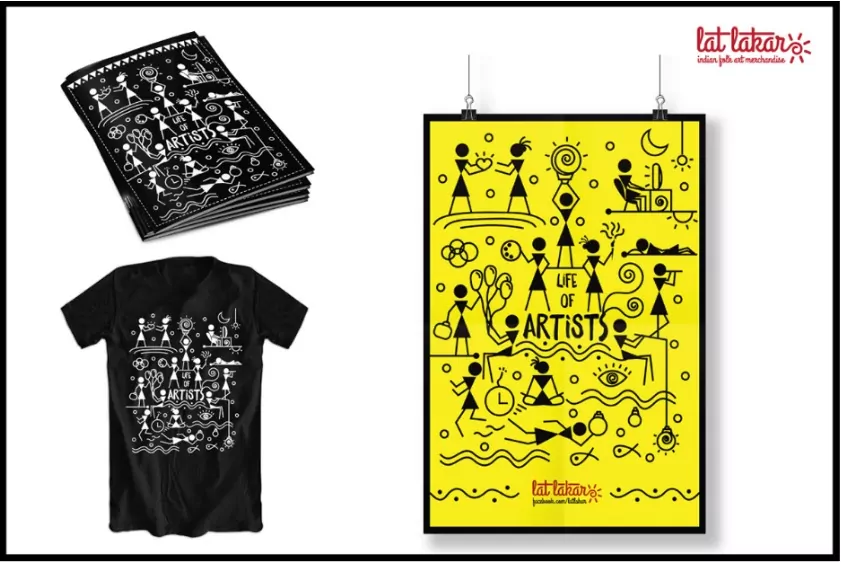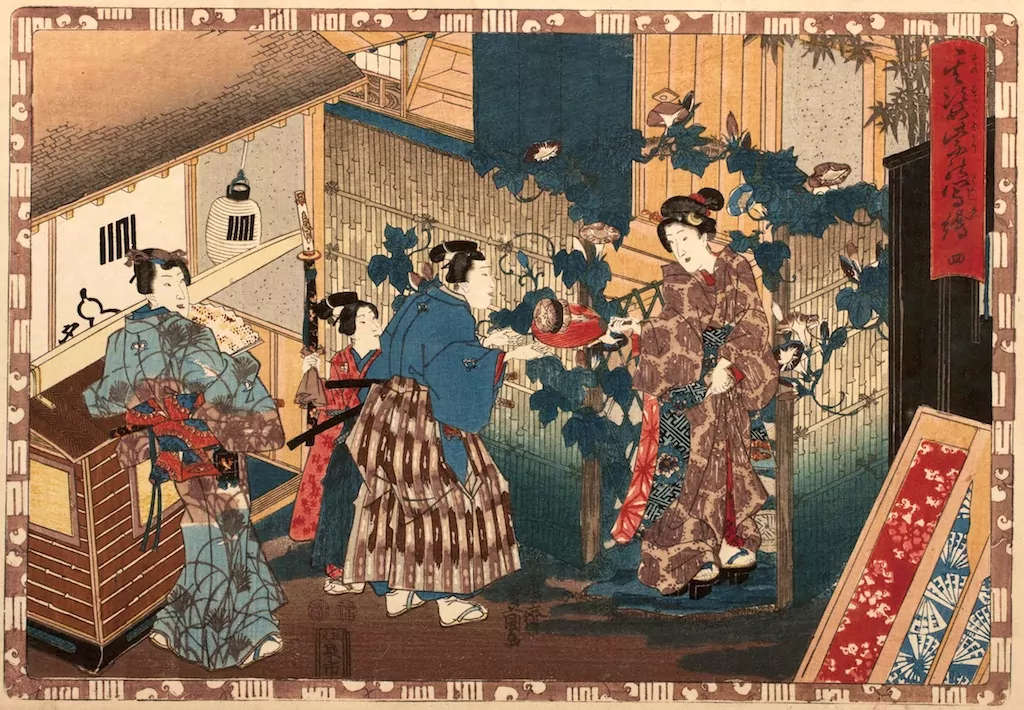Introduction
In India, we have a centuries-old tradition where many tribes and folks paint the external walls of their homes, making it visible to people in the street. Street walls are public property no one owns and people use these walls the way they please. That’s why we often see hand-painted advertisements and posters overlapping one another.
In the West, the debate surrounds the need to draw boundaries between institutionalised street art and destructive graffiti. However, in India, the debated boundaries, between sanctioned vs unsanctioned street art, real art vs degraded graffiti, art galleries vs. street art, etc, are getting blurred and are more or less redundant. In the blog, you will understand these debates while learning about various street artists and their artworks.
Story of Indian Street Artists
Vayeda Brothers
Vayeda Brothers are Warli artists who painted the facade of a housing block in the Lodhi colony with motifs of Warli. Warli is often separated from its spiritual and social significance by the rampant commercialisation of its motifs. Vayeda Brothers, through their street art project, wanted to fight this commercialism and reintroduce Warli art in its true essence to the world. In their mural ‘Valley of Elements’, they used Pictographic motifs of flora and fauna to narrate the tribe’s connection to their environment. They used as many indigenous elements as possible so that people could interact with authentic Warli art, and broke the boundaries that galleries, museums, and art collectors imposed on Warli artists to use only the most basic tools. They believe that it is possible to preserve the true essence of Warli’s art while using new techniques so that the art can evolve.
Daku, an Anonymous Street Artist
Daku first came to the limelight with his cynical take on politics through his graffiti on elections in 2013. However, he is less inclined to protest art than he is into ‘lettering’. He wrote his name Daku in Devnagari script with a self-invented font which many see as a protest in the form of script and style. Daku means ‘dacoit’. He claims to rob walls, making them his even if he can’t own them legally.
His street art in Lodhi Garden is an attack on rampant commercialisation through posters and graffiti on walls. He wanted his works to make people stop and reflect on their lives. More interestingly, he used time as his medium. His works need a blazing sun in the right position for the viewer to read. He used plastic stencils and no paints to create his art.
Hanif Kureshi, St+art Foundation
Hanif Kureshi, a part of the St+art foundation, talked about the restrictive nature of institutionalised art and wanted to give a chance to appreciate art to those who do not have access to art galleries. He believes that the streets are just for commercially and politically motivated slogans. It has to communicate the rich artistic and cultural heritage of India. Though he began as an authority-defying graffiti artist, soon he began to work with the government because promoting culture and art was more important to make his name through controversies.
Graffiti Artists
Some graffiti artists continue to send out important messages through their artworks. Yantra from Delhi is famous for using geometric designs to convey socio-political messages. ‘Yantra’ means ‘machine’. The artist recounts his childhood experience of working in his father’s garage. Leena Kejriwal is known for her project, ‘Missing Girls’ which raised awareness about the issue of human trafficking and prostitution of young girls. Guesswho is an anonymous graffiti artist from Kochi who expresses ongoing changes in cities through a blend of the West and the East that pokes fun at gender stereotypes and Indian oddities.
Also Read: 5 Art Events in August You Cannot Miss Out On!
Street Art Festivals
Mumbai Urban Art Festival at Sassoon Dock explored different facets of the sea world and how people living in the city’s interior consume sea products. The murals on the walls depict water flowing through homes, signifying the unexplored connection between the sea and man. Throughout the festival, one encountered the overwhelming smell of the sea while experiencing the art. The street as a material is a major component that defines the direction artworks would take. Since the entry was free and the Street Art Festival could appeal to the larger public, the directness and simplicity of murals could even make a layperson go home thinking about his/her city, household objects, and the sea and its life.
As a celebration of India’s G20 presidency, Lodhi Street Art Festival acknowledged the role art plays in shaping and reflecting our cultural identity. In collaboration with the Kiran Nadar Museum of Art, the street art murals in the Lodhi district brought out art forms from the confined and stricter space of the art gallery and made them public and widely accessible. A street is a space already with structure and a context, the challenge is how to reimagine it completely. It highlights how changing the context from art gallery to street results in a shift in meaning, and therefore, street art and art gallery can not carry the same expectations and bear the same results. Street art often has directness missing in artworks in galleries.
Street Art Districts
Apart from Lodhi district and Sassoon Dock, three other street art districts are there in India at present. Mahim art district is also home to Dharavi and the world’s largest working-class population. Street art in the Mahim district brings out an understanding of space through the eyes of residents. The artist painted two boys doing what they are best at— dance, representing the hip-hop culture of Dharavi.
Ukkadam Art District in Coimbatore represents harmonious relations between humans and wildlife and raises awareness of the need to conserve wetlands and biodiversity. Kannagi art district has a unique story to tell. Being the largest resettlement district in India, it has a population of people coming from different backgrounds. It brings our relationship between environment and displacement. “Your environment is fundamental to your identity and how when it changes, your life changes accordingly”, says street artist Ambrogi in a conversation with Architectural Digest.
Also Read: 10 Art Festivals You Must See At Least Once
Conclusion
While we see Indian folk artists slowly entering the space of Indian streets, Indian folk art still has a long way to go in street art. Street art can give access to a wider audience of young Indian artists. Vayeda Brothers are young Warli artists who showed readiness to experiment with their art while preserving its essence and took the spirit of the Warli tribe to the Capital. Several other young artists who practise folk arts can avail this opportunity. If you are a folk artist who wants to do something beyond convention, then explore these street art festivals and districts. And maybe you’ll become a Vayeda Brother for your traditional art.
Download the Rooftop App from GooglePlay or AppStore and enrol in our maestro courses!Discover us on Instagram @rooftop_app for all things on traditional Indian art.




